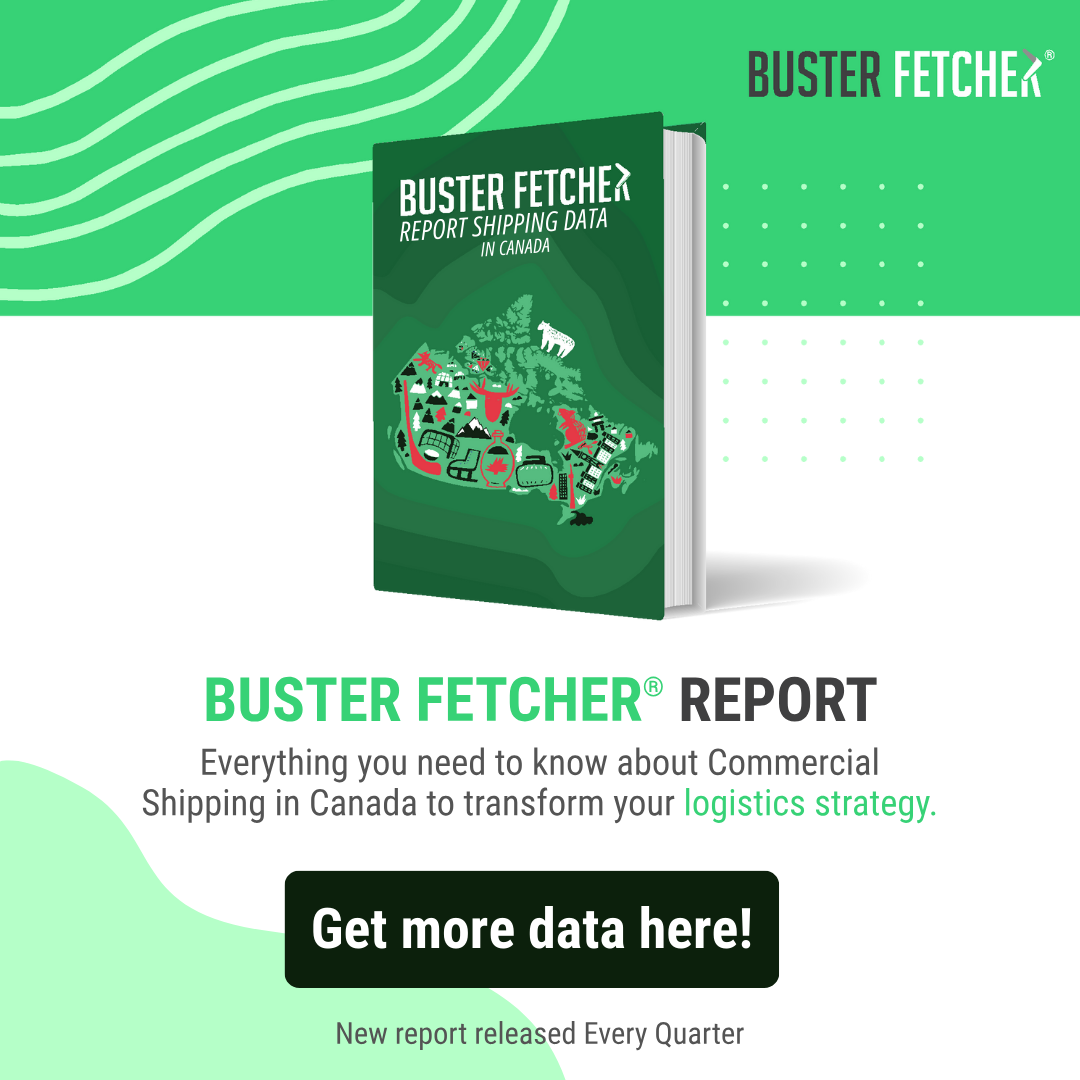Q3 2023 Data: Understanding Package Exceptions a Comprehensive Analysis of Top Carriers
Published on November 11, 2023

How do package exception rates differ among top carriers in Canada, and what does this mean for your logistics strategy?
"Understanding Package Exceptions: Comprehensive Analysis of Canada Post, FedEx, UPS & Purolator," a key section of the Buster Fetcher Report on Shipping Data in Canada, offers a deep dive into this vital question.
We examine the performance of these carriers and the significant regional disparities in their exception rates.
For logistics managers, this analysis goes beyond simple data. It’s a crucial tool for making informed decisions.
High exception rates can jeopardize shipments, potentially disqualifying them from money-back guarantees and impacting the bottom line.
Understanding these patterns is essential in selecting the most reliable carriers for your needs, ensuring more consistent delivery success, and maintaining customer satisfaction.
Make resilience a part of your logistics DNA and get your business moving confidently through Canada’s complex delivery network. Read on!
Table of Contents
Charting the Course: Examining Exceptions Carrier by Carrier Analysis
How do package exceptions impact businesses?
How Businesses Can Minimize Package Exception
1. Choose the Right Carrier: Beyond the Price Tag
2. Ensure Packaging Best Practices: More Than Just a Box
3. Communicate with Carriers: The Power of Partnership
4. Leverage Technology: The Digital Edge
Wrapping It Up: Your Route to Smoother Shipments
Charting the Course: Examining Exceptions Carrier by Carrier Analysis
- Nationwide Average: On a national scale, Purolator records the highest exception percentage at 14.95%, followed closely by FedEx at 12.04%. Canada Post and UPS demonstrate lower exception percentages at 11.17% and 7.88%, respectively.
- Saskatchewan's Exception: Notably, FedEx's exception rate spikes in Saskatchewan at a significant 34.75%, the highest of any carrier in any province listed.
- FedEx and New Brunswick: Another area where FedEx exhibits a high exception percentage is in New Brunswick, recording a 28.70% exception rate.
- British Columbia & Manitoba: Purolator records a higher exception percentage in British Columbia (24.97%) and Manitoba (11.68%) when compared to other carriers.
- Provinces with Limited Data: It's essential to note that data for the Northwest Territories, Nunavut, and Saskatchewan (for UPS) is absent in this analysis.
- Smallest Exception Rate: Quebec witnesses the least exceptions for UPS at a mere 6.68%.
Overall, while Purolator holds the highest nationwide average for exceptions, the specific rates vary significantly by province and carrier. This highlights the importance of considering regional dynamics when assessing carrier reliability.
How do package exceptions impact businesses?
Package exceptions directly impact a business's operational efficiency and customer satisfaction.
These disruptions can lead to delayed deliveries, which may result in a chain reaction of customer dissatisfaction, reduced repeat business, and unforeseen costs related to refunds, replacements, and damage control for a company's reputation.
To stay ahead, it's wise to partner with carriers that have a proven track record for minimal exceptions. Keep a close eye on delivery metrics, and perhaps consider a contingency plan to address potential hiccups swiftly and effectively. This proactive approach can help maintain the trust you've built with your customers, ensuring they return for that same reliable service they've come to expect from your business.
How Businesses Can Minimize Package Exception?
Here's what businesses should be mindful of to fortify their shipping practices:
1. Choose the Right Carrier: Beyond the Price Tag
- Look Beyond Cost: While budgeting is crucial, consider carriers' on-time delivery records, exception rates, and service quality.
- Regional Expertise: Some carriers perform better in specific areas. Choose one with a proven track record in the regions you ship to most.
- Volume and Scalability: Consider how well a carrier can handle your volume of shipments, especially during peak times.
2. Ensure Packaging Best Practices: More Than Just a Box
- Durable Packaging: Invest in quality materials to protect against damage during transit.
- Secure Labeling: Ensure labels are clear, legible, and firmly attached to avoid processing delays.
- Custom Requirements: Be mindful of carriers' packaging guidelines, especially for fragile or unusual items.
3. Communicate with Carriers: The Power of Partnership
- Establish Clear Communication: Regular dialogue can help you stay ahead of potential regional delays and adapt quickly to changes.
- Share Insights: Your experience with customer preferences and seasonal demand can help carriers tailor their services to your needs.
- Issue Resolution: Understand how your carrier handles exceptions. Knowing whom to contact and how to expedite solutions is invaluable.
4. Leverage Technology: The Digital Edge
- Real-time Tracking: Use advanced tracking systems to monitor shipments at every stage.
- Data Analytics: Analyze shipping data to identify patterns and improve decision-making.
- Automation: Employ automated systems for shipping processes to reduce human error.
Wrapping It Up: Your Route to Smoother Shipments
Alright, let's tie everything together! We've walked through the ins and outs of minimizing those pesky package exceptions.
It's clear that choosing the right carrier goes beyond just counting pennies, and that packing your products like a pro can make all the difference.
Plus, never underestimate the power of a good chat with your carrier or the magic of modern tech to keep your packages on track.
Being proactive is the name of the game in logistics.
But hey, we've only scratched the surface here. If you're looking to really get the real deal, our Buster Fetcher Report Shipping Data is your handy guide! It's packed with more data, strategies, and pro-tips than we could ever fit into one conversation.
So, what are you waiting for? Download the full report now and take your logistics game to the next level. Trust us, it's the read that just keeps on giving!



